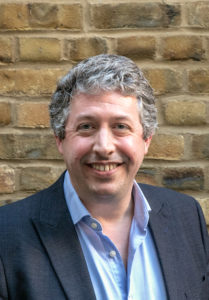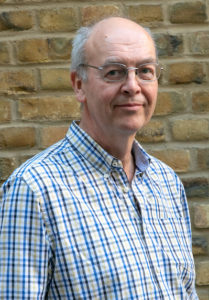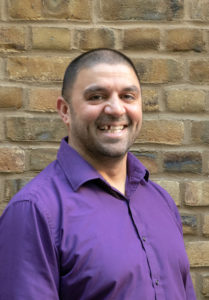Routes into accessibility: how our team became experts

One of the great joys for people who have been working in accessibility for years is that organisations are now taking it more seriously than they have ever done before. Unfortunately, however, the number of people who truly know how to be effective in helping an organisation make their sites and apps accessible is still low.
“The good news about the market is that American companies, government agencies, universities are spending money to become accessible. We have seen, even over the last six months, the amount of people that are spending money on accessibility has really risen… The bad news is: there’s not enough qualified people to do the work because we have really complicated things.”
Debra Ruh
At Hassell Inclusion, we’ve been trying to help this situation for years:
- I put much of my knowledge on embedding accessibility into the software delivery lifecycle process into creating BS 8878, and then wrote a book to explain how to use it more simply
- I have been a visiting lecturer for City University, London’s MSc in Human-Centred System since 2015, helping students to understand what they need to build a career for themselves in accessibility
- And every month our team train designers, developers, content authors, project managers, QA testers, product managers all over the world, for our clients.
Our new initiative is to provide more access to the thinking of some of the members of our team, who have been in the business of accessibility for decades, via our Digital Accessibility Experts podcast.
We hope that it will provide a great resource for people who are new to accessibility, or who have some experience but only in one particular area of accessibility, to become more effective in advocating for and delivering accessibility in their teams.
People arrive in accessibility from all sorts of directions. You don’t have to have a background in development, or testing. You could equally arrive from governance, user testing, or marketing. The beauty of accessibility is that it takes people with all sorts of skillsets. All you need is passion, a place to learn your skills, and a place to apply them.
So we asked some of our podcast team how they arrived in accessibility, and what they love about it that makes them such passionate advocates. Here’s what they said…
Jonathan:
 I’ve always cared about how easy it is to use computers. My PhD was to help people like my mother get the same benefits from technology that I do.
I’ve always cared about how easy it is to use computers. My PhD was to help people like my mother get the same benefits from technology that I do.
I’ve always been a helper, rather than a coder – creating Software Development Kits at Symbian, and bringing digital experts together to set best practice at the BBC. Sitting down with top designers, coders, authors and product managers to capture the best of what they do was the best apprenticeship in digital anyone could have. And that breadth of view helped me create the standards for digital accessibility at the BBC when my boss asked me to set a strategy in response to an accessibility audit he commissioned in 2002. With a family connection to disability through my nephew, suddenly my personal drive for accessibility converged with my skills and opportunity.
Two years’ later I had the chance to make accessibility my full time job, creating innovations in games-based learning for kids with special educational needs. And I’ve been working in it for over 14 years since, as a Product Manager, Trainer, Head of Accessibility, and International Standards Editor. It’s always provided the perfect combination of daily technical, creative and organisational challenge, never getting old or stale, always with the same aim: helping teams make more of their users smile.
Rob:
 I have a confession…I still get excited by standards compliant code.
I have a confession…I still get excited by standards compliant code.
Having trained as a front end engineer, I’ve been working with designs and code for over 15 years. My passion for accessibility was harnessed when i was asked to join the Disability Leadership Panel at a large corporate. It was made up of incredible disability lobbyists and thought leaders of the time. Accessibility came to life listening to this group and made me realise the importance of my mission. They embraced me into their world, where I’ve been ever since.
And yes, I still get excited when I see a native <select>.
Graham:
 In the early 2000s I was working for a large UK bank as a web developer – helping to build and maintain their flagship brochureware and online banking websites. One day, a developer from an agency showed some of us how a screen reader worked, and how to tweak websites so people who use them got the best experience. It was a revelation – I had always felt the web was there for everyone, but I realised we had been excluding blind users, and people with other disabilities.
In the early 2000s I was working for a large UK bank as a web developer – helping to build and maintain their flagship brochureware and online banking websites. One day, a developer from an agency showed some of us how a screen reader worked, and how to tweak websites so people who use them got the best experience. It was a revelation – I had always felt the web was there for everyone, but I realised we had been excluding blind users, and people with other disabilities.
I started including accessibility techniques in my work, and it then became my job to ensure the accessibility of all the sites we worked on. Shortly after, I helped build and launch the bank’s new rebranded main website – at the time the most accessible of all the UK bank websites. My idealism, my belief that the web is for all, has kept me doing this ever since, even when finding projects featuring accessibility was difficult.
Yac:
 I’ve always had an interest in technology – yes I’m a geek!
I’ve always had an interest in technology – yes I’m a geek!
Working in a public facing role I encountered the day to day difficulties some people had with not understanding content, or being able to access technology that others could. Fast forward a few years and as a system administrator for several offices I saw how those with disabilities weren’t able to participate as inclusively as everyone else. I wasn’t happy with this situation so did research into ways of improving things.
The rest as they say, is history! Various roles across different organisations have increased my skills but always with a focus to improve accessibility: getting more disabled people into work as part of government strategy, creating accessible websites for IT firms, and training and teaching people to use Assistive Technology. Accessibility is an ever changing and challenging area and helping to make a difference makes the difference.
What do you think?
We’d love to know how you got into accessibility, and how it has shaped your work. Please share your comments below.
Want more?
If this has been useful, you might like to sign-up for the Hassell Inclusion newsletter to get more insights like this in your email every month.
